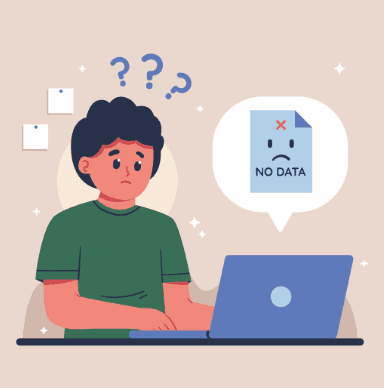Google Query Groups Explained: What It Is and How It Works
Google Query Groups Explained: What It Is and How It Works
Google continues to evolve how it presents data to website owners and marketers. In October 2025, it introduced one of the most important updates to Search Console Insights in years: Google Query Groups.
This new feature changes the way website owners view and understand the search queries that bring visitors to their pages. Instead of overwhelming lists of thousands of similar search phrases, Google now groups related queries together based on user intent.
Let’s explore what Google Query Groups are, how they work, and how Google uses artificial intelligence (AI) to make your SEO insights more meaningful.
What Are Google Query Groups?
Google Query Groups organize similar search queries into categories that reflect a single user intent.
For example, instead of listing separate queries such as:
“best running shoes for beginners”
“good beginner running sneakers”
“entry-level running shoes review”
Google combines these into one Query Group that represents the broader intent: running shoes for beginners.
This AI-powered grouping allows you to view topics, not just individual keywords. It offers a cleaner and more strategic way to understand how your audience finds your content.
Google Uses AI to Group Queries in Search Console Data
A key part of this feature is the use of artificial intelligence.
According to Google’s official announcement, the system uses advanced AI clustering models to detect relationships between search queries. These models analyze linguistic similarities, semantic intent, and search behavior patterns to determine which queries belong together.
The AI looks beyond simple keyword matching. It understands context, recognizing that “cheap hotels near me” and “budget accommodations” are part of the same informational intent even though the wording is different.
Here is how AI contributes to this process:
Semantic Understanding: Google’s AI interprets meaning rather than relying on exact word matches.
User Intent Recognition: It determines when different queries express the same intent, such as comparing, buying, or learning.
Dynamic Grouping: The AI continuously updates these groups as search trends evolve.
Cleaner Data: By grouping similar queries intelligently, AI reduces data noise and provides clearer insights.
By using AI, Google ensures that Query Groups evolve automatically as user behavior changes. This gives SEO professionals a living, accurate reflection of audience intent rather than a static list of keywords.
Why Query Groups Matter for SEO
Query Groups help marketers and SEO professionals interpret data in a more strategic way. Instead of tracking hundreds of keyword variations, you can focus on the bigger picture: topics and trends.
The main benefits include:
Clarity of intent: You see the true purpose behind searches rather than getting lost in keyword variations.
Simplified analytics: Data becomes easier to understand with fewer duplicates.
Better content planning: Knowing which topic groups perform best helps guide future content creation.
Trend insights: Query Groups highlight which topics are gaining or losing interest.
For instance, if the “home workout routines” group is trending up, that signals an opportunity to create or expand content on fitness topics.
How Query Groups Work Inside Search Console
In Search Console Insights, a new section now displays Query Group performance. Each group includes:
Total clicks and impressions aggregated across all queries in the group.
Top individual queries that drive the most clicks within that group.
Trend markers that show whether a topic is trending up or down.
Clicking on a Query Group opens a detailed performance report where you can explore the underlying queries, compare metrics, and analyze how they contribute to your site’s visibility.
This structure makes it easier to identify which topics deserve optimization or expansion.
How to Use Query Groups for Better SEO
Focus on Topics, Not Variants
Use Query Groups to identify broader topics that drive traffic and build comprehensive, high-quality content around them.Monitor Trends
Watch for “Trending Up” groups to identify rising topics and capitalize on them early.Review Declining Topics
“Trending Down” groups can show areas of fading interest. Consider updating or refocusing content for these topics.Identify Content Gaps
Compare your top-performing Query Groups with your existing content. If a group generates interest but lacks strong content on your site, that is an opportunity.Track Changes Over Time
Since AI continually adjusts groupings, check your data regularly to stay updated on new trends and shifts in audience intent.
Limitations to Keep in Mind
While Query Groups are powerful, there are a few limitations to be aware of:
Smaller websites with limited data may not see Query Groups yet.
AI groupings can change as the algorithm learns and adapts.
Group data complements, but does not replace, individual keyword insights.
Even with these limitations, the benefits of clearer and more accurate insights make this feature an important step forward.
AI Overview
As Google’s AI continues to refine Query Groups, expect even more precise and useful data in the future. If you have access to this feature in your Search Console, explore it today and integrate it into your SEO and digital marketing strategies.
It is not just a reporting enhancement; it is a smarter, data-driven way to understand your audience and strengthen your digital marketing success.
FAQs
1. What is Google Groups and how does it work?
Google Groups is a service that lets users create online forums and email-based groups to discuss topics and share information. It works by allowing members to post messages, collaborate, and manage group conversations in one shared space.
2. What are the four types of groups in Google Groups?
The four types of Google Groups are Email List, Web Forum, Q&A Forum, and Collaborative Inbox. Each type is designed for different communication and collaboration needs within organizations or online communities.
3. How does Google query work?
A Google query works by matching the user’s search terms with indexed web pages using algorithms and AI. It evaluates relevance, content quality, and intent to display the most accurate and useful search results.
4. What is the difference between a Google Group and a contact group?
A Google Group is an online forum or mailing list for communication among multiple users, while a contact group is a personal list of email contacts used for sending messages easily from Gmail or Google Contacts.
Final Thoughts
Google Query Groups mark a major improvement in how search data is analyzed and presented. By using AI to cluster similar queries, Google has made Search Console Insights far more intuitive and valuable for website owners, marketers, and SEO specialists.
This feature helps you understand not just what users are typing into Google but what they truly want to find. It allows you to align your content strategy with audience intent, streamline keyword analysis, and spot new opportunities faster.
For businesses and agencies offering digital marketing services, this feature provides a competitive advantage. Query Groups reveal high-intent search topics that can shape SEO campaigns, improve paid search targeting, and guide content marketing strategies. By analyzing these grouped insights, digital marketing professionals can create campaigns that better match audience behavior and deliver stronger results.
Must-Read SEO & AI Insights
Are “Near Me” Keywords Dead in 2025? Local SEO Insights – Discover why "Near Me" keywords still matter and how to boost local search visibility.
OpenAI GPT vs Google Gemini: Who Wins the AI Battle – AI showdown: Discover which platform takes the crown.
How to Benchmark Your AI Visibility Against Competitors – Learn to track AI mentions, citations & share of voice to outsmart competitors.
GPT Atlas vs Chrome: Which Browser Is Smarter? – Compare AI-powered browsers and see which leads the pack.
What Are the October 2025 Google SEO Updates – Stay ahead with the latest Google SEO changes this October.



